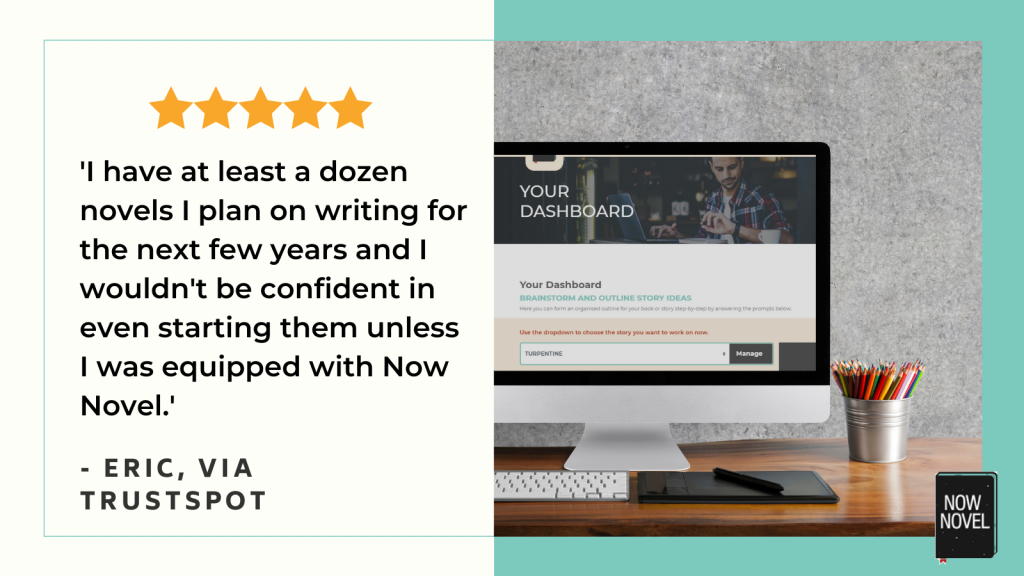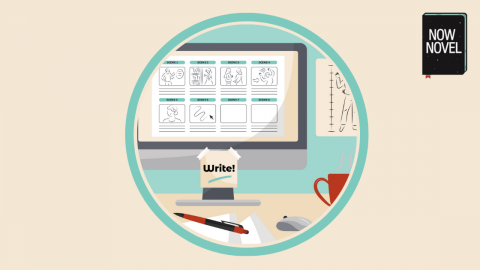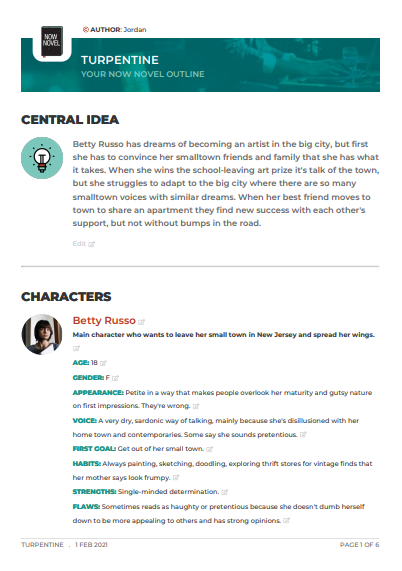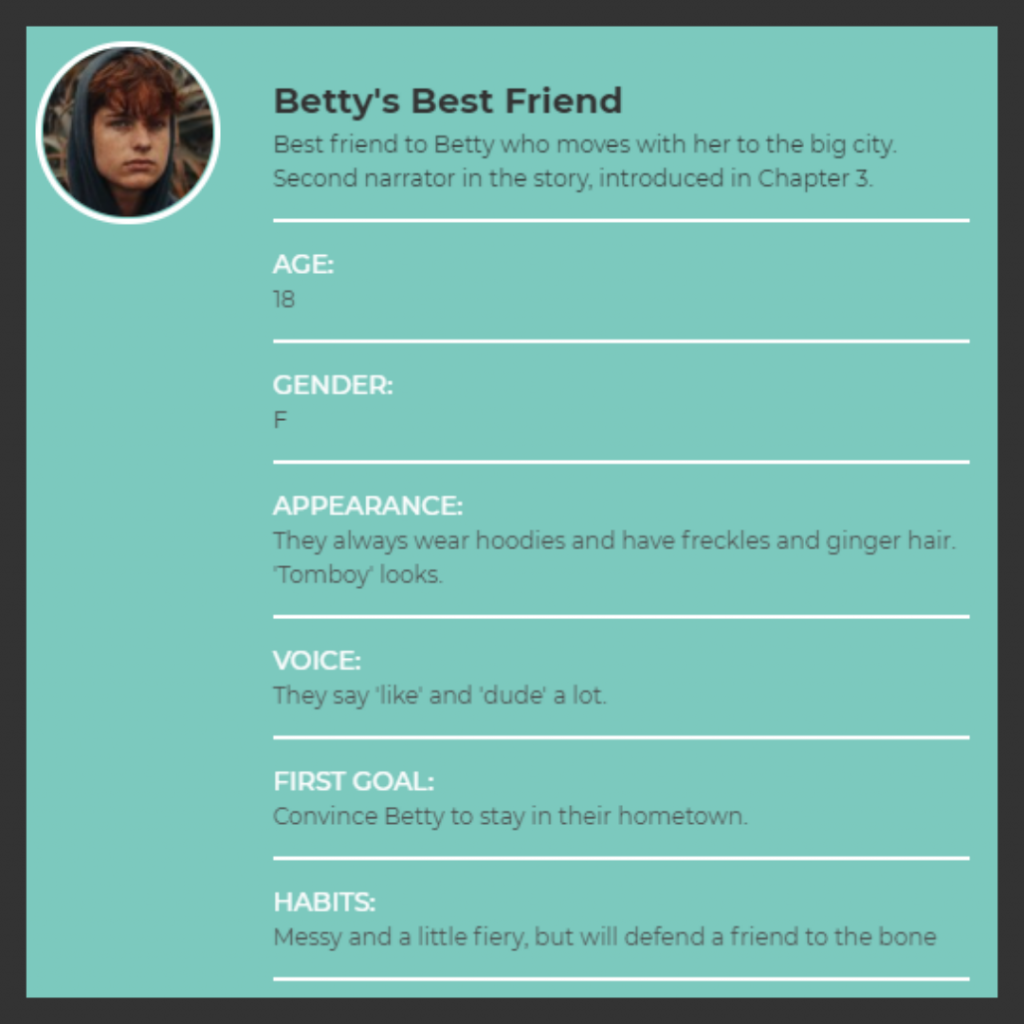Using a writing prompts generator is not for every writer. Yet step-by-step prompts do make complex tasks easier. Read 7 tips for getting more out of writing prompts like those in Now Novel’s dashboard:
How to use a writing prompts generator well
- Use helpful placeholder text
- Use prompts to build flexible outlines
- Say ‘it’s perfect for this draft’
- Add your own extra inputs
- Be detailed and specific
- Stop to expand when you need
- Keep revised prompt answers to compare
Let’s explore these ideas further, with examples:
1. Use helpful placeholder text
When using a plot generator or character profile prompts, it’s tempting to try to supply every piece of information asked for immediately.
For example, entering data such as characters’ names, professions, hometowns, and every other identifying detail.
Sometimes you haven’t explored a story idea enough yet to know all these details with certainty (or commitment), though.
Use helpful placeholder text that describes the story purpose or function of a character, setting or object instead.
For example, you could create a character outline for a main character named ‘Betty Russo’ but give her best friend the placeholder name ‘Betty’s Best Friend’ and leave some details blank, for now.
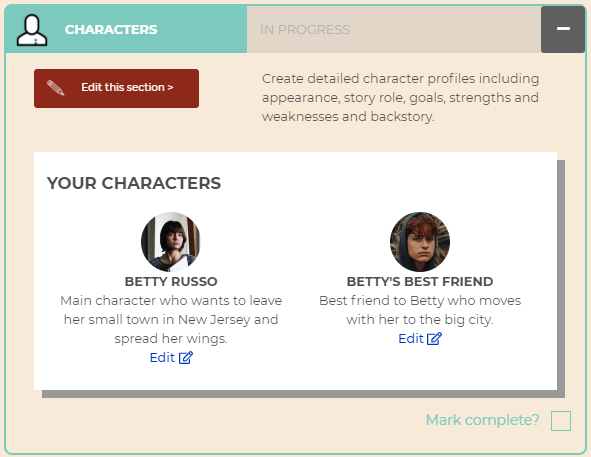
This ensures passing uncertainty does not inhibit your further progress.
2. Use prompts to build flexible outlines
When brainstorming story ideas using writing prompt generators, it’s easy to chase after every tiny, anxious detail.
Keep an overview and outline of ideas written in simple sentences.
This makes it so much easier. You’re able to get a fast summary view of all your story’s essential information. From here, it’s much easier to write a detailed story.
It’s best to use a tool where you may jump back into a specific prompt and edit your answer to add further details or information anytime.
3. Say ‘it’s perfect for this draft’
When you’re overthinking every detail, even answering a two-word writing prompt may be challenging.
When using any writing prompt generator or outlining tool like the Now Novel dashboard or Scrivener, it’s important to let perfection go.
Practice saying ‘it’s perfect for this draft’. Writing is rewriting – the saying holds true.
4. Add your own extra inputs
Just because a story outlining tool is designed or coded a certain way, it doesn’t mean you have to stick rigidly to its limits.
For example, under ‘role’ in outlining a character, you could say ‘second narrator, introduced Chapter 3’ for Betty’s friend:
Under ‘gender’ you could put ‘doesn’t believe in the gender binary; they/them’. This tells us something important about writing prompt generators: Use a tool that uses your own imagination fully.
Open-ended means freedom, but can be daunting. Yet don’t use randomized, computer-generated names and ideas.
Think, ask questions, and do the necessary work to create something with your individual, inventive stamp. You’ll learn so much more in the process.
5. Be detailed and specific
As you answer writing prompts to expand on your story idea, try to be detailed and specific.
The more specific you are now, the more you will have helpful paramaters that guide further ideas and expansion.
For example, for the story outline discussed so far, by saying that Betty’s friend is tomboyish and always wears hoodies, this degree of detail makes it easy to brainstorm scene ideas. For example:
- An older relation badgers Betty to ‘doll herself up’
- Betty’s friend is bullied at school for not fitting conventional gender norms
- Betty’s friend shares that she wants to leave the town too, asks Betty to stay because she doesn’t have many allies
Don’t be too cautious to set anything in stone now. The idea-finding stage is the right time to take wild leaps or just free-write ideas. Play, have fun.

Finish your story with helpful insights
Subscribe to our weekly newsletter and get the latest writing tips, Q&As and inspiration first.
6. Stop to expand when you need
You might think of the story creation process as a fixed timeline:
- Create an incredibly detailed outline.
- Draft the first chapter.
- Draft the complete novel, chapter by chapter.
This is not necessarily how you need to use a writing prompts generator.
Your path could be:
- Create a character profile for a person in a situation.
- Draft a scene showing this character and their situation.
- Go back to create the story’s core premise and idea.
- Draft a first chapter setting up this premise.
- Go back and outline another character you realise is important at this point in the story.
The point here is that sometimes we set down broad details, like a tailor pinning the shape of the body to cloth for cutting.
Sometimes we cut the cloth with wild abandon, too. Thats fine. A patch of a scene too small? Maybe we can use it for an appliqué, a prologue, some accessory to the story. This paragraph is an example of more expansive ‘riffing’.
When metaphors exhaust their stretch, we go back to the outline:
7. Keep revised prompt answers to compare
When you finish brainstorming ideas using writing prompts, save your outline. If you decide to restart (many do), don’t type over the old.
Keep revised writing prompt answers to compare. You might later find you liked version 1 for some parts of your story, version 2 (or 2.2, or 3, or 4) for others.
Ready to create an outline in easy, step-by-step prompts? Start writing now.
